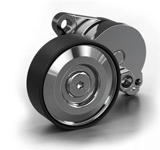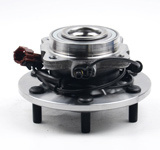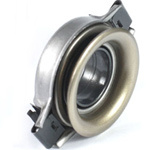Understanding the Concentric Slave Cylinder: Essential Knowledge for Automotive Enthusiasts
Release time:
Dec 21,2024
The concentric slave cylinder (CSC) is an integral part of the hydraulic clutch system found in many manual transmission vehicles. Its design allows it to serve as both a slave cylinder and a release bearing, which is particularly useful in vehicles with limited space in the engine bay. Understanding the functions and mechanics of the concentric slave cylinder is essential for automotive enthusiasts and professionals alike.
At its core, the concentric slave cylinder is responsible for disengaging the clutch when the driver presses the clutch pedal. This action is crucial as it allows the driver to shift gears smoothly without damaging the transmission. The CSC operates by using hydraulic fluid to create pressure, which pushes the clutch fork or directly disengages the clutch itself. This seamless operation is vital for maintaining the vehicle’s performance and longevity.
One of the significant advantages of the concentric slave cylinder is its compact design. Traditional clutch systems often have separate components for the slave cylinder and release bearing, leading to increased complexity and more parts that can fail. The CSC unifies these functions, reducing the number of components and potential failure points, making it a reliable choice for modern vehicles. This design simplification not only helps in reducing manufacturing costs but also makes it easier for mechanics to service and replace when necessary.
However, like any mechanical component, the concentric slave cylinder is not immune to wear and tear. Common issues include fluid leaks, which can compromise the hydraulic system's effectiveness, and loss of pressure, leading to difficulty in engaging or disengaging the clutch. Regular maintenance checks can help identify early signs of problems, ensuring that the clutch system operates smoothly. It’s also essential to use high-quality hydraulic fluid to prevent contamination and corrosion within the system.
In conclusion, the concentric slave cylinder is a pivotal component in the hydraulic clutch system of many vehicles. Its innovative design and functionality contribute significantly to the performance and reliability of manual transmissions. For automotive enthusiasts, understanding the role and maintenance of the CSC can enhance their knowledge and ability to troubleshoot issues that may arise. By keeping an eye on the condition of the concentric slave cylinder and addressing any potential problems early, drivers can ensure a smooth and reliable driving experience.
At its core, the concentric slave cylinder is responsible for disengaging the clutch when the driver presses the clutch pedal. This action is crucial as it allows the driver to shift gears smoothly without damaging the transmission. The CSC operates by using hydraulic fluid to create pressure, which pushes the clutch fork or directly disengages the clutch itself. This seamless operation is vital for maintaining the vehicle’s performance and longevity.
One of the significant advantages of the concentric slave cylinder is its compact design. Traditional clutch systems often have separate components for the slave cylinder and release bearing, leading to increased complexity and more parts that can fail. The CSC unifies these functions, reducing the number of components and potential failure points, making it a reliable choice for modern vehicles. This design simplification not only helps in reducing manufacturing costs but also makes it easier for mechanics to service and replace when necessary.
However, like any mechanical component, the concentric slave cylinder is not immune to wear and tear. Common issues include fluid leaks, which can compromise the hydraulic system's effectiveness, and loss of pressure, leading to difficulty in engaging or disengaging the clutch. Regular maintenance checks can help identify early signs of problems, ensuring that the clutch system operates smoothly. It’s also essential to use high-quality hydraulic fluid to prevent contamination and corrosion within the system.
In conclusion, the concentric slave cylinder is a pivotal component in the hydraulic clutch system of many vehicles. Its innovative design and functionality contribute significantly to the performance and reliability of manual transmissions. For automotive enthusiasts, understanding the role and maintenance of the CSC can enhance their knowledge and ability to troubleshoot issues that may arise. By keeping an eye on the condition of the concentric slave cylinder and addressing any potential problems early, drivers can ensure a smooth and reliable driving experience.






















